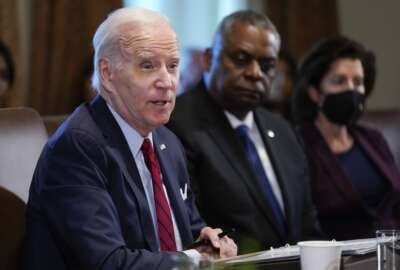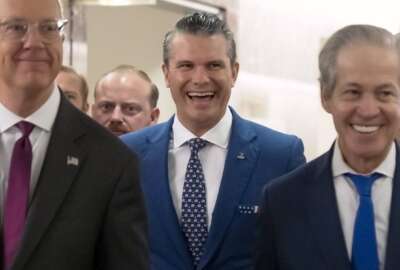Who gets a break? Clashing ideas on tax relief are teed up for the 2024 campaign
Days after the bipartisan deal on the debt limit became law, House Republicans proposed a slew of tax cuts, leading to charges of hypocrisy by Democrats in a...
WASHINGTON (AP) — Just six days after the bipartisan deal on the debt limit became law, House Republicans proposed a slew of tax cuts, leading to charges of hypocrisy by Democrats in a squabble that shows two clashing visions for the U.S. economy.
GOP lawmakers are pushing deep tax cuts for companies and the affluent as the primary driver for sustaining economic growth, while President Joe Biden and fellow Democrats seek more targeted tax cuts to achieve social goals such as reducing child poverty and shifting to renewable energy that can help the economy in the long run.
The Republican tax cuts for businesses, coupled with an increase in the standard deduction for households, would be funded by wiping out $216 billion in tax breaks over 10 years that Biden signed into law last year to support the development of electric vehicles and renewable energy.
“They should look at this plan as more jobs, higher wages,” said Rep. Jason Smith, R-Mo., chairman of the House Ways and Means Committee. “We are undoing bad policy and replacing it with good.”
White House officials say Republicans’ quick pivot to tax cuts reveals they were never sincere about shrinking deficits during the debt limit debate. Many — but not all — of the tax changes that Republicans last week passed out of the Ways and Means Committee would be temporary.
If the proposed changes related to corporate taxes were made permanent, the Biden administration says, it would undermine the spending cuts that were part of the agreement this month to raise the government’s borrowing authority.
“No sooner did we get a balanced bipartisan agreement to reduce deficits than they came back and put $500 billion of tax cuts for businesses on the table,” said Lael Brainard, director of the White House National Economic Council. “It’s just inconsistent.”
The dispute sets the stage for the 2024 elections and the immediate economic challenges that the winners will face: Lawmakers will need to raise the debt limit again and key portions of the 2017 tax cuts passed under then-President Donald Trump will expire and cause taxes to rise for most households unless they are extended.
Democrats say the latest Republican plan would largely favor companies and better-off households. It would make certain tax breaks for businesses retroactive to 2022. The White House says that tax breaks for what companies did in the past would do little to create the jobs that Republicans are promising.
“Let’s really dig in and ask, ‘How will these business tax breaks affect things people care about?’ They care about good jobs in their communities,” Brainard said. “Is a retroactive tax windfall going to result in a single additional job?”
While Republicans are premising their tax cuts on the need to get tax relief flowing through the economy, Democrats are positioning their preferred tax breaks as investments that would occur over decades.
That difference matters as Republicans believe jobs are likely to come from lower effective rates and policies such as permanently making it easier for small businesses to fully expense the cost of new business equipment and changing the IRS requirements for companies using contractors. Democrats counter that tax breaks to help children and provide market signals for cleaner energy will deliver growth in the long run.
“The really fundamental part of key policies has to be around how do we make long-term investments that help our communities, help our families,” said Rep. Suzan DelBene, D-Wash., who chairs the Democratic Congressional Campaign Committee. “Republicans have been short-term thinkers and are really focused on the wealthy and well connected.”
One key difference between parties is how they would get money to families. The GOP bill would increase the standard deduction by $2,000 for individuals and $4,000 for families in 2024 and 2025. That might sound like a lot of money, but it’s less than one might think because those totals apply to the amount of income that’s taxable rather than savings.
By definition, lower earners would receive less money back from a more generous standard deduction. The bottom 40% of households would on average have tax cuts of less than $12 a month, according to an analysis by the Tax Policy Center. Households in the top 20% would have an average monthly tax cut of $46.
Smith defended his plan by saying it grew out of what voters told his committee at field hearings in West Virginia, Oklahoma and Georgia. He said that the three bills that are part of the tax plan grew out of the hearings that began in February and reflected what lawmakers heard from voters.
“Everything in the legislation that we passed out came from discussions or ideas at all of these hearings outside of Washington,” Smith said. “So this bill is for working class families.”
By contrast, Democrats would rather help families by renewing the expanded child tax credit, which became more accessible and increased in size because of Biden’s 2021 coronavirus pandemic relief package. Families could get monthly payments of as much as $300 per child as part of the expansion, which lapsed after one year. The child poverty rate fell to a record low of 5.2% in 2021 because of the payments.
Another source of tension is how Republicans structure their costs. Many of their tax cuts would expire after 2025, even though they’d like to make their policies permanent. But the Biden tax breaks they want to eliminate extend over 10 years, leading to the charge that Republicans are hiding the full expense of their tax cuts. An estimate by the Committee for a Responsible Federal Budget indicates that the costs of making the entire GOP plan permanent would exceed $1 trillion, eliminating almost all of the savings from spending cuts that were part of the debt limit agreement.
“The most cynical part of this is the cost,” said Howard Gleckman, a senior fellow at the Tax Policy Center. “They’re taking 10 years of revenue and using it to pay for two years of tax cuts. They make the tax cuts temporary so it looks like it costs less than it actually costs.”
The Tax Foundation, a conservative-leaning policy organization, estimated that the GOP bills would slightly boost the size of the U.S. economy in 2024 and 2025. But the benefits are limited because the business tax cuts are mostly temporary and unlikely to change the investment and hiring choices of companies.
“When you’re thinking about how tax policy can improve the economy, all of that is long-term decision-making,” said Erica York, senior economist at the Tax Foundation. “If you want this to be as meaningful as it can be, then it needs to be made permanently.”
While the House bill is unlikely to pass the Senate or get signed by Biden, it’s part of a broader message on how each party thinks about the tax code. Just as Democrats are deeply skeptical that the GOP’s cuts would produce growth, Republicans are wary about administering social policy through the IRS. Those differences point toward the risks in 2025, when the debt limit drama restarts and tax breaks for the middle class and wealthy alike are on the verge of lapsing.
“There’s a fundamental disconnect about the purpose of the tax code,” York said. “That sets us up in 2025 for a whole bunch of uncertainty.”
Copyright © 2024 The Associated Press. All rights reserved. This website is not intended for users located within the European Economic Area.






